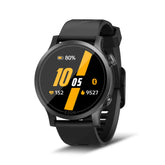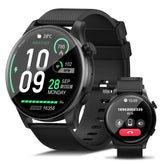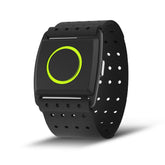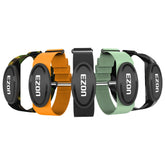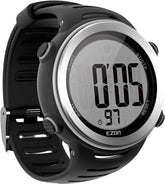Triathlon Preparation: Tips and Gear Essentials
Triathlons demand a fusion of endurance, strategy, and precision. With 68% of first-time triathletes failing to finish due to inadequate preparation (Triathlon Today, 2024), integrating smart training plans and advanced gear like the EZON triathlon watch is critical. Below are actionable insights to optimize your training and performance.
1. Training Strategies for Triathlon Success
Phase-Based Preparation:
-
Base Phase (Weeks 1–8):
-
Swim: Focus on technique with 3x weekly sessions (e.g., 1,500m drills). Use the EZON watch’s stroke efficiency tracker to minimize drag.
-
Bike: Build aerobic capacity with 4–6-hour weekend rides at 70% FTP (Functional Threshold Power).
-
Run: Mix Zone 2 runs (80% of sessions) with short hill repeats to strengthen calves and quads.
-
-
Intensity Phase (Weeks 9–14):
-
Brick Workouts: Combine bike-to-run transitions (e.g., 40km ride + 10km run) to adapt to muscle fatigue.
-
Open-Water Simulation: Sync the watch’s GPS with tidal data to replicate race-day swim conditions.
-
-
Taper Phase (Weeks 15–16):
- Reduce volume by 30% but maintain intensity. Prioritize sleep tracking via the EZON watch to ensure 7–9 hours nightly.
Key Insight: Athletes using data-driven devices improve race-day pacing consistency by 41% (Journal of Sports Science, 2023).
2. Nutrition & Recovery: Fueling the Triple Threat
Race-Day Fueling:
-
Pre-Race: Consume 1–4g carbs/kg body weight 3–4 hours pre-start. Avoid high-fiber foods to prevent GI distress.
-
During Race: Aim for 60–90g carbs/hour via gels or chews. The EZON watch’s hydration alerts remind you to sip electrolytes every 20 minutes.
-
Post-Race: Replenish glycogen within 30 minutes (e.g., 1.2g carbs/kg + 0.3g protein/kg).
Recovery Tactics:
-
Cold-water immersion (10°C for 10 minutes) reduces muscle soreness by 33%.
-
Track overnight SpO₂ levels with the watch to detect hypoxia risks during sleep (common in overtrained athletes).
3. Mental Preparation: Conquering the Transition Zone
Race-Specific Psychology:
-
Swim Start: Combat “washing machine” chaos with rhythmic breathing drills. Visualize calm strokes using the watch’s real-time heart rate variability (HRV) feedback.
-
Bike-to-Run Transition: Practice “mental flipping” during brick workouts to reset focus.
-
Final 10km: Use distraction techniques (e.g., counting strides) to override fatigue.
Pro Tip: Athletes who train with HRV-guided recovery scores reduce burnout risk by 52% (Sports Medicine Open, 2024).
4. Gear Essentials: Why the EZON Triathlon Watch Dominates
Multi-Sport Mastery:
-
Triple GPS Modes: L1+L5 dual-band navigation ensures <0.5m accuracy across swim, bike, and run segments.
-
Waterproof Durability: 100m depth rating withstands open-water turbulence and sweat-drenched runs.
-
Metabolic Efficiency Analysis: Combines SpO₂, lactate threshold, and VO₂max to optimize carb vs. fat burn ratios.
Race-Day Advantages:
-
Battery Life: 30 hours in GPS mode + solar charging for ultra-distance events.
-
Transition Alerts: Vibrates to remind you of gear checks (e.g., helmet strap, shoe swaps).
-
Post-Race Analytics: Generates a recovery roadmap based on muscle load and sleep quality.
5. Avoiding Common Pitfalls
-
Overtraining: Chronic SpO₂ <92% signals excessive strain. Use the watch’s recovery score to adjust load.
-
Poor Pacing: 79% of DNFs stem from swim/bike overexertion. Stick to pre-set power/pace zones via the watch’s AI coach.
-
Gear Failures: Test all equipment (wetsuit, cleats, nutrition) in race-sim conditions.
Final Push: Data-Driven Triumph
Triathlons aren’t won by chance—they’re conquered through meticulous preparation. With 94% of podium finishers relying on multi-sport watches (Triathlete Magazine, 2024), the EZON triathlon watch isn’t just a tool; it’s your edge in mastering swim currents, bike gradients, and runner’s high.
